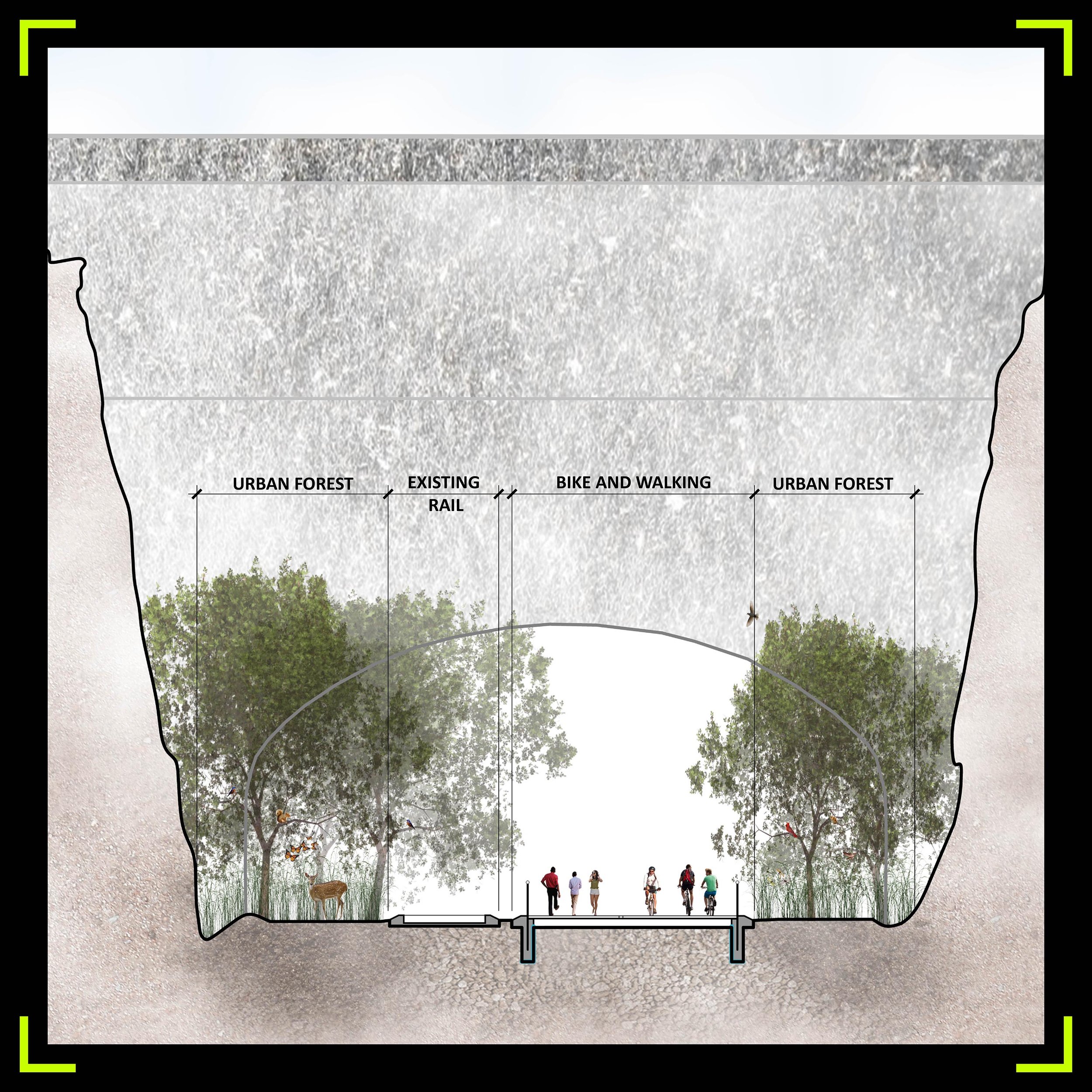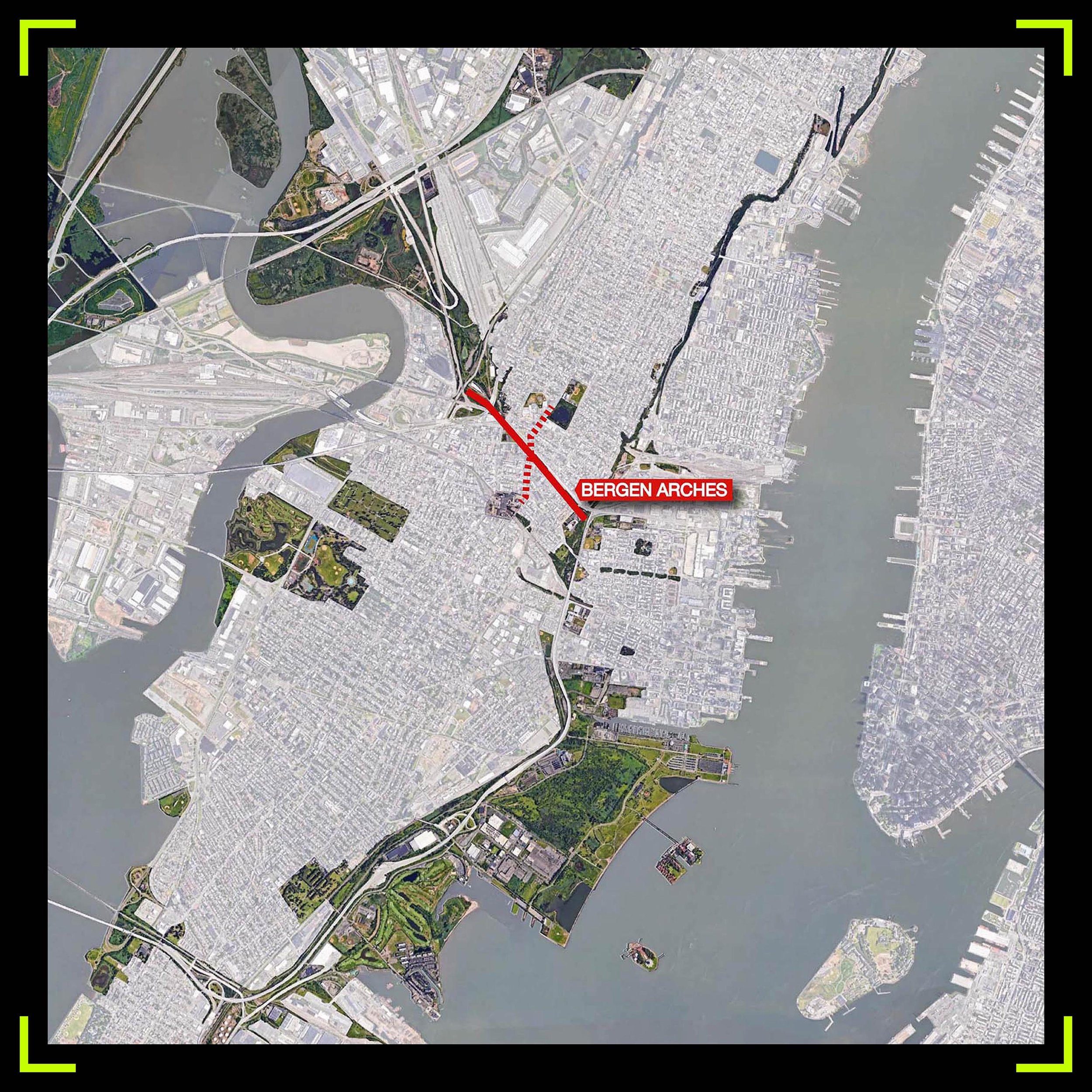Our Vision is to Activate the Bergen Arches for Active Transportation and Passive Recreation
We advocate preserving the historical, environmental, and cultural aspects that give the Arches its urbanistic qualities.
HISTORY OF THE ARCHES
Erie Cut near Palisade Ave Arch
Photo by Donald Furler | Center for Railroad Photography & Art
The Bergen Arches were historically owned by the Erie Railroad Company, which operated its railroad system through NY, OH, and PA. Originally named the Bergen Archways, the rail lines were built to connect passengers to New York City through the Pavonia terminal in Jersey City.
The Arches were built between 1906 and 1909. Their construction involved the removal of 800,000 cubic yards of blue trap rock by blasting 250,000 lbs. of dynamite and excavating through an additional 160,000 lbs. of earth. Although the Arches were once considered the Greatest Railroad Cut, their construction divided neighborhoods, damaged homes, and killed many underprivileged people who worked and lived near the site.
Our organization believes that the Bergen Arches has an opportunity to stitch communities together through adaptive reuse and greenway connectivity.
Today, most of the Erie Railroad routes are now operated by the Norfolk Southern Railway. The rail lines are owned by NJ Transit but have not been active since est. 1957 when the last train ran through the Erie Cut. Other entities, such as Conrail and the NJ Department of Transportation, own portions of the site at the street level.
The Arches have evolved into an urban exploration project. Nature grew back over time and formed entire ecologies that didn’t exist before. Artists took it upon themselves to express their abilities by tagging the arched structures that now give the tunnels a new character.
We hope to activate the Bergen Arches via existing access points and promote public use for pedestrians and cyclists. A relatively clear linear trail, suitable for walking, hiking, and off-road biking is currently in place. Additional improvements such as infrastructure, paving, fencing, and new access points are potential considerations.
A minimum-viable-product approach, a simple bike/walk path, or a greenway, through the Bergen Arches, will minimize complexity and maximize community benefits in the shortest possible timeframe.
A greenway through the Bergen Arches would not impede future transit plans and could complement any future mass transit endeavors. However, a greenway would not be contingent on any other form of transportation being in place. The greenway model could be implemented in the very near term while any future potential mass transit projects are evaluated.
The Bergen Arches are well-positioned to connect two proposed greenways: the Sixth Street Embankment and the Essex Hudson Greenway. The challenge between connecting these lines would be to bridge over railways that are still active and to create safe and secure entry and exit points along the entire stretch of the proposed greenway. Each greenway organization is working with its respective communities to advocate for their piece of the network.
These projects combined as one greenway form the preferred route into Jersey City and New York City for the East Coast Greenway, a national organization working towards connecting a path that stretches from Florida to Maine.
The Jersey City Council approved the plans for the Embankment project in May 2022, but it remains contingent upon a settlement of ongoing litigation. In November 2021, The Essex Hudson Greenway had its funding approved by the state of NJ to purchase the property required to create the pedestrian line for their project.
With the approval of the 2023 NJ State Budget, Jersey City became the recipient of a $100,000 state grant to fund a feasibility study and analyze the Bergen Arches for green space and mass transit purposes. This is thanks to the legislation sponsored by Senator Brian P. Stack and Assemblyman Raj Mukherji.
Make a tax-deductible contribution to support the Bergen Arches Preservation Coalition.
Your support matters to us. We cannot do this without you!
Your generous, tax-deductible contribution is vital for the continued persistence of our non-profit organization.
The BAPC welcomes donations from individuals, foundations, and corporations.
Contributions of any size significantly impact and provide crucial funding for our ongoing advocacy efforts.
See bergenarches.com/donate for more information!




